Guest Post By Tyler Morgan
Over the last year I began to wrestle over the best way to prepare and deliver sermons to our middle school students. I wanted to be able to challenge them, but felt as though my topical based sermons were just not cutting it. I felt as though my sermon prep was half-hearted and surface level. As a result of this, I decided to take a closer look at different ways to prepare sermons. I started with looking at what approaches other pastors in my church were taking. My supervisor uses the method of expository preaching, which breaks down Bible text based on the theological meaning the author is trying to portray; the goal of expository preaching is to let the text speak for itself rather than jumping through different parts of the Bible picking and choosing various passages to support a specific point or idea. This approach was foreign to me, and the thought of preaching in such a way took me out of my comfort zone.
Over the last week, I finished taking our students through the book of 1st John utilizing the expository preaching approach. In order to do this, I had to revamp the way that I spent my time preparing sermons. I had to seek out and utilize a different resources, which in turn changed my half-hearted sermon prep time into a time of learning for me as I prepared what the Holy Spirit wanted me to teach on each week. Our middle school youth group spent 15 weeks studying the book of 1st John, breaking it down verse by verse. As a result, we saw God work in indescribable ways through this series. The students were able to realize how the whole book of 1st John fit together, and they were able to better understand the intentions of the book and how it can still apply to them today. Reflecting on the study has shown me how the Holy Spirit worked in new ways and in turn it has undoubtedly changed the way that I’m approaching both my sermon preparations and message delivery.
Because of this experience, I have become curious as to how other student pastors use their sermon prep time and how they deliver their sermons. I went ahead and developed a survey that was posted on a few youth ministry pages (including the DYM Community Facebook page) with hopes of getting back 50 responses. I ended up getting 500 responses from student pastors of various denominations along with heavy interest from the respondents requesting the results of the survey. Below are the top five results that were found from the 500 surveys responses received:
Top Five Results
- Matt Chandler was identified as the most popular preacher among the student pastors who participated in the survey. 20% (97 votes) of pastors surveyed said that if they chose to listen to one sermon a week, it would be one from Matt Chandler. This came as a surprise to me as I thought that Andy Stanley (86 votes, 18%) or Francis Chan (83 votes, 17%) or would be top the contenders. Judah Smith, Steven Furtick, Tim Keller, and John Piper followed the top three in the prospective order.
- As far as what Bible translation is most commonly used from the pulpit, the English Standard Version ranked number one with 192 votes (39%). The New Living Translation (123 votes, 25%) was the second highest translation used from the pulpit for the student pastors in this survey. This was surprising to me as I thought that the New International Version would be in the top two, however it ranked number three with 117 votes (24%).
- The length of time spent teaching from the pulpit varied. 166 (33%) of responders said their sermons are typically 20-25 minutes long. Only 75 (16%) of the student pastors surveyed said their sermons are typically over 30 minutes long. This makes me wonder how much of this outcome is based on the ages of the population each pastor is serving and what programming looks like for the remainder of gathering time.
- Almost 80% of the students pastors surveyed reported that they use Bible commentaries and/or online resources to help aid them in their sermon prep study. However, only 40% reported using a Bible software program such as Logos in their studies. For me, I have found Logos software to be very beneficial for both my sermon prep and my daily study of scripture.
- The result I found to be the most interesting from this survey was the amount of time student pastors spent doing sermon prep each week. 229 (46%) of the student pastors say they spend 3-4 hours in sermon prep; 145 (29%) respondents reported spending 5-6 hours on sermon prep, while only 59 (12%) of student pastors said they spend more than seven hours in their sermon prep. Prior to using expository preaching, I would spend about 3-4 hours on sermon prep, but changing styles has caused me to spend around 8 hours on sermon prep each week. Though preparing my sermons has taken more time using expository preaching, I feel that the Holy Spirit has helped my teaching to speak more clearly to our students as I have also gained a better understanding of His Word; by using expository preaching, I have not become fixated on trying to prove a point with scripture, but it has allowed me to let the Word speak for itself.
Conclusion
In conclusion, this survey shows that student pastors study and preach in many different ways. While everybody has different styles and methods to preparing and teaching, I plead with you to stay true to what the Holy Spirit is speaking through the use of His Word. People may interpret different Bible passages in different ways, but our goal should be to teach our students to know and understand what God is speaking to them in His Words, and not what we want His Word to say. I wish I could take back the times I used my own words over His. I pray your time studying for your upcoming sermons are fruitful, and that you will be able to dig farther in God’s Word more than you ever have before.
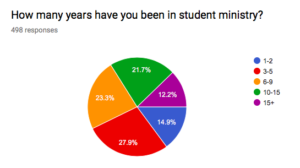
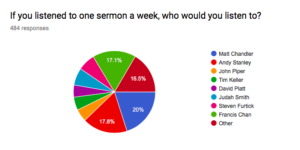
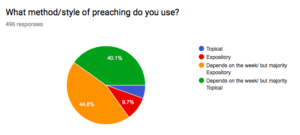
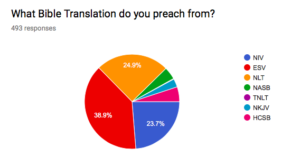
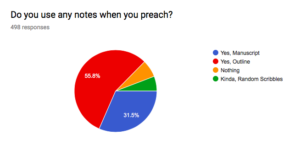

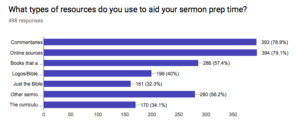
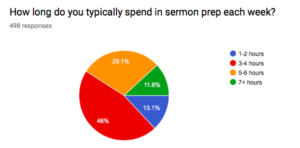
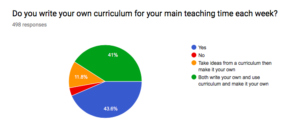
Leave A Comment